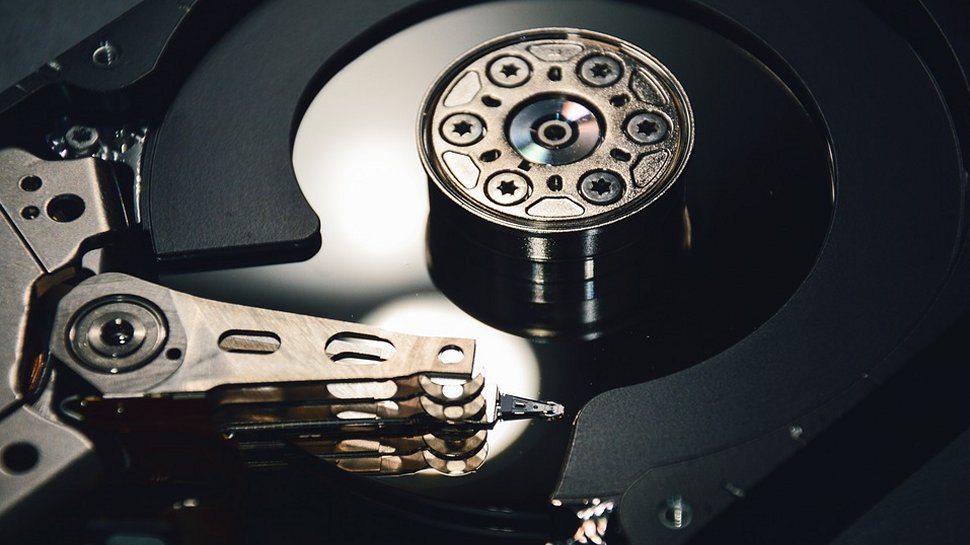The role storage plays in the AI data cycle
AI growth fuels a "virtuous data cycle," driving storage demand

As the Artificial Intelligence (AI) industry continues to mature, it necessitates the development of robust infrastructure to train models and deliver services – greatly impacting data storage and management. This has significant implications for the amount of data generated and most importantly, how and where to store this insight.
The ability to manage this data efficiently is becoming critical as data requirements increase exponentially due to the continuous growth and development of AI tools. Therefore, the storage infrastructure needed to support these systems must be able to scale in parallel with the rapid advancements in AI applications and capabilities.
With AI creating new data and making existing data even more valuable, a cycle quickly emerges, where increased data generation leads to expanded storage needs. This fuels further data generation – forming a "virtuous AI data cycle" which drives AI development forward. To fully leverage AI’s potential, organizations must not only grasp this cycle, but fully understand its implications for infrastructure and resource management.
Peter Hayles, Product Marketing Manager HDD, Western Digital.
A six stage AI data cycle
The AI Data Cycle consists of a six-stage framework designed to streamline data handling and storage. The first stage is focused on collecting existing raw data and storage. Data here is collected and stored from various sources, and the analysis of the quality and diversity of collected data is critical – setting the base for the next stages. For this stage of the cycle, capacity enterprise hard disk drives (eHDDs) are recommended, as they deliver the highest capacity per drive and lowest cost per bit.
The next stage is where data is prepared for intake and the evaluation from the previous stage is administered, prepared and transformed for training purposes. To accommodate this stage, datacentres are applying upgraded storage infrastructure – like fast data lakes – to support data for preparation and intake. Here, high-capacity SSDs are needed to enhance existing HDD storage or to create new all-flash storage systems. This ensures swift access to organised and prepared data.
Then comes the next phase of training of AI models to make accurate projections with training data. This phase typically occurs on high-performance supercomputers – requiring specific and high-performance storage solutions to operate as effectively as possible. Here, high-bandwidth flash storage and low-latency enhanced eSSDs are created to meet the specific needs of this stage, providing necessary speed and precision.
Next, following training, the inference and prompting stage focuses on the creation of a user-friendly interface for AI models. This stage incorporates the use of an application programming interface (API), dashboards and tools that combine context to specific data with end-user prompts. Then, AI models will integrate into internet and client applications without needing to interchange current systems. This means that maintaining current systems alongside new AI computing will require further storage.
Are you a pro? Subscribe to our newsletter
Sign up to the TechRadar Pro newsletter to get all the top news, opinion, features and guidance your business needs to succeed!
Here, larger and faster SSDs are essential for AI upgrades in computers, and higher-capacity embedded flash devices are needed for smartphones and IoT systems to maintain seamless functionality in real-world applications.
The AI inference engine stage follows, where trained models are positioned into production environments to perform the examination of new data, produce new content or provide real-time predictions. At this stage, the engine’s level of efficiency is critical in achieving quick and accurate AI responses. Therefore, to ensure a comprehensive data analysis, significant storage performance is essential. To support this stage, high-capacity SSDs can be used for streaming or to model data into inference servers based on scale or response time needs, while high-performance SSDs can be used for caching.
The final stage is where the new content is created, with insights produced by AI models and then stored. This stage completes the data cycle, by continually enhancing data value for future model training and analysis. The generated content will be stored away on enterprise hard drives for datacenter archive purposes and in both high-capacity SSDs and embedded flash devices for AI edge devices, making it readily available for future analysis.
A self-sustaining data generation cycle
By fully understanding the six stages of the AI data cycle and employing the right storage tools to support each phase, businesses can effectively sustain AI technology, streamline their internal operations, and maximize the benefits of their AI investment.
Today’s AI applications use data to produce text, video, images and various other forms of interesting content. This continuous loop of data consumption and generation accelerates the need for performance-driven and scalable storage technologies for managing large AI datasets and re-factoring complex data efficiently, driving further innovation.
The demand for appropriate storage solutions will significantly increase in time as the role of AI across operations becomes even more prevalent and integral. As a result, the access to data, the efficiency and accuracy of AI models, and larger, higher-quality datasets will also become increasingly important. Additionally, as AI becomes embedded across nearly every industry, partners and customers can expect to see storage component providers tailor their products so that there is an appropriate solution at each and every stage of the AI data cycle.
We've featured the best data recovery service.
This article was produced as part of TechRadarPro's Expert Insights channel where we feature the best and brightest minds in the technology industry today. The views expressed here are those of the author and are not necessarily those of TechRadarPro or Future plc. If you are interested in contributing find out more here: https://www.techradar.com/news/submit-your-story-to-techradar-pro
Peter Hayles, Product Marketing Manager HDD, Western Digital.